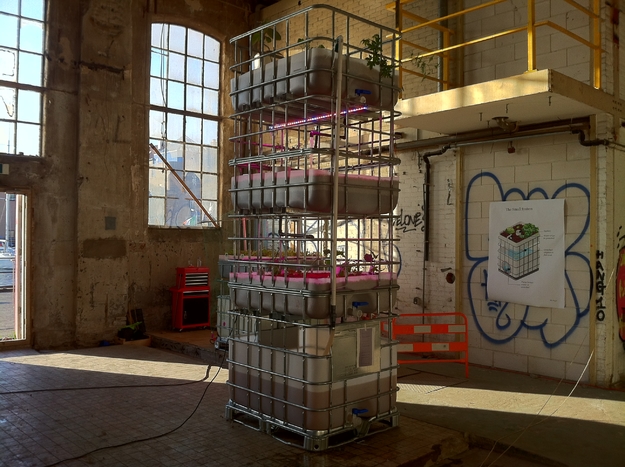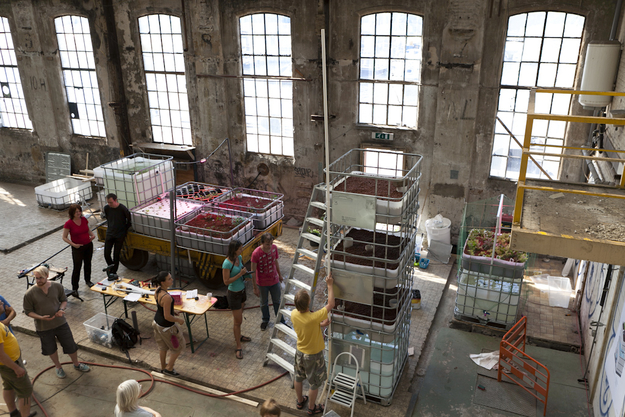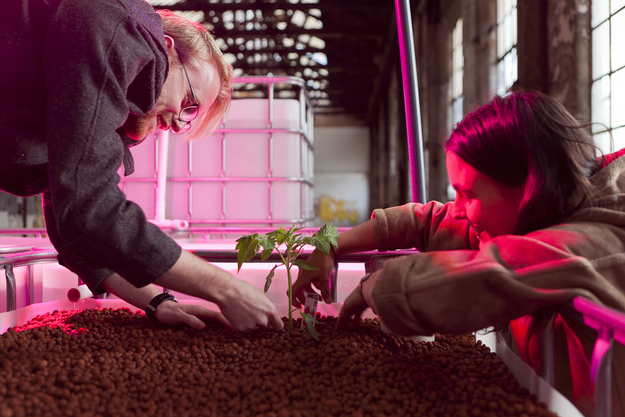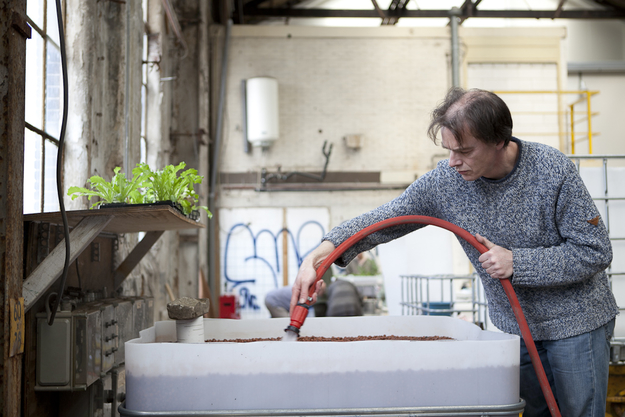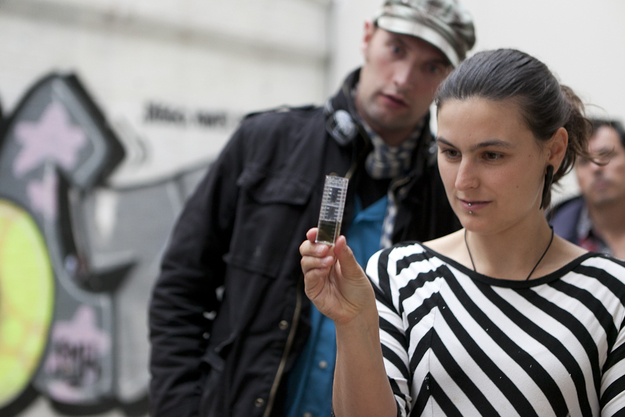Our work
Aquaponics is a sustainable, recirculating ecosystem for food production made up of fish, microorganisms and vegetables. The fish feed the plants and the plants clean the water the fish swim in. The system is pretty fragile when you start out, and has to be monitored constantly. The water has to be tested for certain chemicals, for its pH-levels etc.. Small changes to the composition of the water can be deadly. As the ecosystem grows it gets stronger, until it cannot only sustain itself, but also protect itself from external influences. As of August 2012 we have built a number of aquaponic set-ups, including a 4-storey tower (1 fish tank, 3 plant containers). We are monitoring, adjusting, and keeping our fingers crossed that our fish and plants survive and prosper.
The system
An aquaponic system consists of at least one fish tank and one plant container. In the plant container, plants are grown on a layer of expanded clay pebbles. These are bits of clay that are baked at a really high temperature, which means they are full of air and let through lots of oxygen - more than regular soil. This is good for the plant roots. After a while the roots, bacteria and worms (that live in the layer of clay pebbles) start to form a complex ecosystem. Fish are kept in another container. Water from this container is pumped into the layer of pebbles at regular intervals. The water feeds the plants. The bacteria and the plant roots work as a filter: they clean the water, which is then released back into the fish tank. We feed the fish with the gluttonous, fast-growing larvae of the black soldier fly (hermetia illucens) found near the neighborhood trash. Result: happy fish and organic plants.
Get involved
Please feel free to get in touch and join us. Help us build or research, or just hang out for a nice chat about urban agriculture and happy farming. You can also participate in one of the aquaponics workshops we are organizing. For more information, check our aquaponics event page or e-mail Deborah Meibergen.
